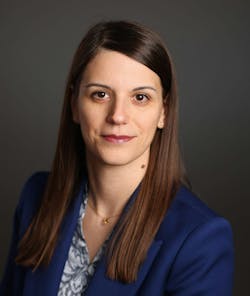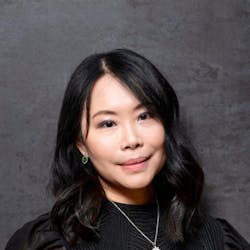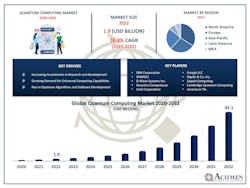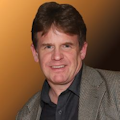What is quantum computing?
Quantum computing is a field in computer science that harnesses the principles of quantum mechanics to perform computations at speeds and scales previously thought impossible. An initial key application is in cryptography, where quantum algorithms can break existing encryption methods while also enabling the development of quantum-safe cryptography.
Here’s Lightwave+BTR’s related coverage of quantum technology:
· Fiber’s sensitive and quantum future
· PacketLight and Toshiba demonstrate quantum key distribution (QKD) over DWDM links
As OFC celebrates its fiftieth year during its annual conference in San Francisco at the end of March, it will give quantum computing technology center stage during the event as an emerging technology.
This year’s event will coincide with the United Nations proclaiming 2025 as the International Year of Quantum Science and Technology.
In June, the United Nations General Assembly (UNGA) proclaimed 2025 as the "International Year of Quantum Science and Technology (IYQ)" under the auspices of UNESCO.
OFC will feature a symposium that aims to cover many new developments in the field, particularly those related to quantum communication and photonics for quantum computing.
Elaine Wong, Redmond Barry Distinguished Professor, Faculty of Electrical and Electronic Engineering, University of Melbourne, who also serves as a General Chair for OFC, said quantum is a key highlight of this year’s OFC tradeshow and the show’s program chairs wanted to see how it would intertwine with other parts of the show.
“There are celebrations to commemorate the year of quantum, including the planned symposium at the show,” she said. “This should be highlighted, but obviously, we’re also celebrating the 50th year of OFC.”
Quantum momentum grows
Developments in the quantum computing industry continue to bubble up.
A notable development is how traditional optical vendors work with quantum community members.
One key area of focus is security.
Quantum Key Distribution (QKD) is a key development as security becomes a key concern for quantum computing. Already implemented today in Asia and Europe, QKD provides a way to securely deliver cryptographic keys with key bits securely encoded at the single photon level.
Each photon is sent over a fiber link. Quantum mechanics guarantees that any eavesdropper observing one or more photons will change the information encoded, so no attacker can copy, clone, or read the information.
Traditional optical vendors like PacketLight have been getting active in the QKD space. They recently showcased quantum key distribution (QKD) over DWDM links through a partnership with Toshiba, highlighting the growing interest in quantum communications networks.
The PacketLight and Toshiba teams validated the compatibility of quantum communication systems with optical networking infrastructure.
Through a detailed series of evaluations, they demonstrated the delivery of QKD alongside a high number of conventional DWDM data signals and showcased quantum secure data transmission with QKD encryption. This is a step towards the practical implementation of quantum communications.
Other upstart vendors are working to raise capital to advance their vision.
Israel-based photonic quantum computer technology company Quantum Source announced that it has raised a $50 million Series A investment round, bringing its total funding to over $77 million.
Fotini Karinou, principal hardware architect— optical technologies at Microsoft’s Azure Hardware Systems & Infrastructure organization, who also serves as an OFC General Chair, said service providers, emerging vendors, and research and education institutions continue to step up to the quantum plate.
“There’s a focus on how to make systems and hardware to trial quantum channels with standard telecom channels,” she said. “Telecom operators and systems vendors are becoming active.”
Quantum community collaboration
As quantum developments continue to ramp up, there’s a growing emphasis on creating new environments for collaboration.
Quantum companies themselves are also stepping up their collaborative efforts. ORCA Computing, a quantum computing company, is leading a collaborative R&D consortium to develop multiplexing technologies to advance quantum networking for quantum computing and data centers.
ORCA Computing collaborates closely with other leading quantum expert companies and organizations, including Toshiba Europe, Bay Photonics, Imperial College London, and University College London. Together, they are developing advanced multiplexing and switching technologies for large-scale quantum data transfer, aiming to scale quantum computing to levels necessary for commercial application.
Another notable development is the creation of quantum innovation hubs. Like the rise of California’s Silicon Valley, cities and municipalities worldwide seek to become destinations for quantum development and commerce.
In the United States, several states, including Illinois (Chicago Quantum Exchange), Colorado (Elevate Quantum), Tennessee (Chattanooga Quantum Collaborative), Maryland (The Quantum Stater), Connecticut (QuantumCT), Massachusetts (Quantum Complex), are creating quantum hubs as part of the U.S. Commerce program are being designated TechHubs.
For example, Chattanooga, Tennessee's Quantum Collaborative provides a testbed for companies to build, test, and refine the commercialization of quantum technologies, including equipment and software.
Chattanooga became a household name in broadband when local utility EPB launched its 1 Gbps community-wide fiber-to-the-home (FTTH) network, which generated nearly $2.8 billion in community benefit over the first decade of its operations.
The Chattanooga Quantum Collaborative (CQC) is capitalizing on new quantum resources. These include EPB’s quantum infrastructure and EPB Quantum NetworkSM powered by Qubitekk, which prepare business, academic, and government organizations to optimize quantum benefits.
Likewise, European countries are getting active in the quantum game.
In Germany, the Munich Quantum Valley (MQV) is promoting quantum science and quantum technologies in Bavaria with the primary goal of developing and operating competitive quantum computers. According to the MQV site, it connects research, industry, funders, and the public.
Also, Hamburg recently launched a consortium highlighting the Hamburg Full Stack Initiative.
Attracting quantum participation
While OFC isn’t a classic quantum networking show, the organizers are seeing success in luring more companies to the show.
“Since 2023, the Quantum sub-committee is getting stronger,” Wong said. “All indications point to the fact that the community typically does not go to OFC, so we have become another avenue for collaboration.”
Karinou added that “expanding OFC's scope and bridging the classical optical communications and quantum communities can foster greater collaboration and mutual benefits”.
“We are seeing more and more representation of the quantum community at OFC technical program and exhibition,” she said. “
“Quantum companies are showcasing their devices, systems, and networks at OFC, while quantum experts are engaging in special sessions, workshops, and panels on quantum topics throughout the conference”.
Quantum Key Distribution (QKD) is a key development as security becomes a key concern for quantum computing. Already implemented today in Asia and Europe, QKD provides a way to securely deliver cryptographic keys with key bits securely encoded at the single photon level.
Each photon is sent over a fiber link. Quantum mechanics guarantees that any eavesdropper observing one or more photons will change the information encoded, so no attacker can copy, clone, or read the information.
“We will continue to expand the technical scope and emphasize the shared principles connecting classical optical communications and quantum applications,” Karinou said.
Quantum’s growth potential
While quantum is arguably still an emerging market segment, industry watchers see growth potential. Reports from Acumen Research and Hyperion Research signal near and long-term targets.
According to Acumen Research, the quantum computing market is projected to reach $42.1 billion by 2032, growing at a CAGR of 36.4% from 2023 to 2032.
From a regional perspective, the research firm noted growth in North America and Asia-Pacific. The North American region led with a more than 47% quantum computing market share in 2022, while the Asia-Pacific quantum computing market will record a CAGR of more than 37.8% from 2023 to 2032.
Further, from an application perspective, the machine learning segment held the highest revenue share of 38% in 2022. By end-use, the BFSI segment is expected to grow at a remarkable CAGR of 37.2% over the predicted period.
Hyperion Research is also bullish on the quantum market and is forecast to reach over $1.5 billion in 2026.
During the Q2B Silicon Valley conference at the end of 2023, the research firm cautioned that “it is dangerous to project out too far” because there are too many unknowns.
However, it pointed to the growing interest in quantum from governments, companies, and academia, which shows the ever-increasing interest.
For related articles, visit the Network Design Topic Center.
For more information on high-speed transmission systems and suppliers, visit the Lightwave Buyer’s Guide.
To stay abreast of fiber network deployments, subscribe to Lightwave’s Service Providers and Datacom/Data Center newsletters.
OFC symposim to showcase quantum
During OFC, attendees can attend The Year of Quantum: Applications, Architectures and Enabling Technologies for Quantum Communication.
Led by representatives from various universities and companies, including Univ. of Waterloo, Canada, Stanford University, University of California Los Angeles, Xanadu Quantum Technologies, and BAQIS, China, OFC’s new symposium will focus on several key areas:
· Enabling technologies: The symposium will highlight new developments in single-photon detectors, single-photon and entangled-photon sources, quantum repeaters and memories, quantum photonic integrated circuit platforms, and their impact on architectures and protocols.
· Cryptography: Panels will explore continuous and discrete variable (CV and DV)- based quantum communication and cryptographic systems, interoperability and integration in communication networks, and attempts at hybrid encoding.
· Emerging application spaces: Talks will examine free-space and satellite-based quantum communications.
About the Author
Sean Buckley
Sean is responsible for establishing and executing the editorial strategy of Lightwave across its website, email newsletters, events, and other information products.




